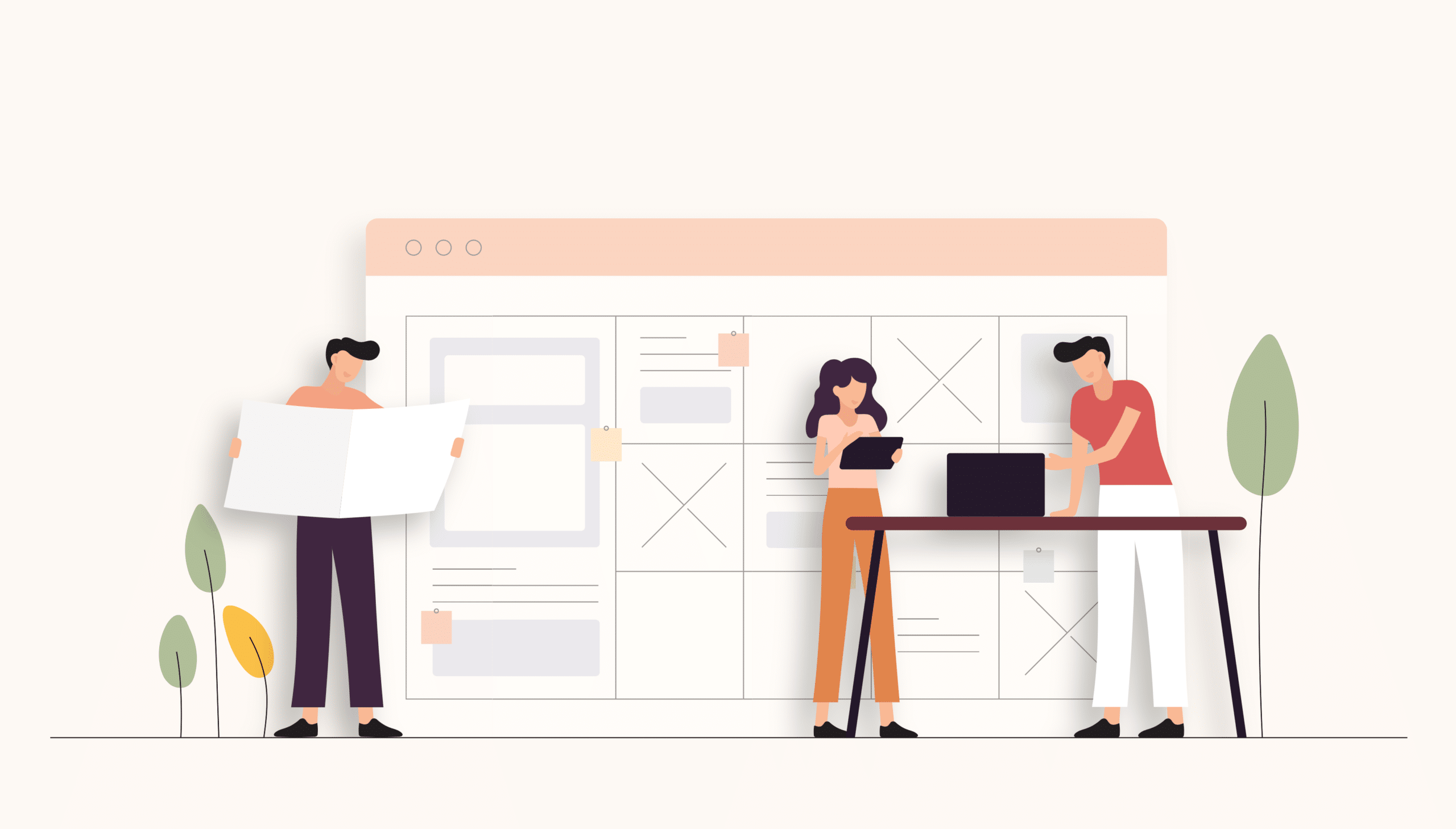With this type of value proposition, more companies want to incorporate Design into their product delivery models. Your company might be one of them, leaving you wondering how can you fold Design into your existing process without significantly increasing delivery time.
In traditional project plans, Design and Development are often separated into two linear phases: Design first, then Development. However, in organizations that leverage Agile, synchronizing the two phases to occur simultaneously speeds up delivery. Read on to learn more about User Experience (UX) Design and Agile development, explore some common misconceptions, and understand how you can overcome those misconceptions to ensure a successful delivery.
Building the Right Thing
UX focuses on identifying a customer need and creating a solution to meet that need. It often utilizes Design Thinking to put the user at the center of the design process and uses their goals to drive the experience. UX often requires research, prototyping, testing, resources, and time to develop a solution that meets the users’ needs.
Building the Thing Right
Agile is a way for engineering teams to work together to build and deliver solutions customers want quickly. Agile encourages teams to iterate and learn while emphasizing implementation and delivery. The focus is on addressing the pain points of software development projects. Its short timeframes keep teams focused, and its incremental approach helps them change direction quickly, providing agility to the organization. As a result, agile is one of today’s most popular software development methodologies.
Common Misconceptions
With the individual benefits of UX and Agile, combining the two seems like an easy decision. Yet, there are a few common objections to including UX design in an Agile process.
Some development teams worry that integrating design into the sprint will slow down team cadence. Designers have a lot of steps they perform to ensure they are building the right product for a user. This often reads as time. However, by stepping away from the idea that the steps in a design process need to occur linearly and all at once, you introduce flexibility. Creating flexibility in the design process and marrying it with Agile speeds up overall development time.
Another misconception is that once design direction is set up-front, the development team can do the remaining design work and implementation without further involvement from the designer. But what if development runs into a design problem or a major change to the feature is required? It can be difficult and costly to reengage a designer. Having a designer available to consult with regularly saves time and money in the long run.
Setting Up for Success
By having the right conversations before starting development, it is possible to integrate UX and Agile successfully. Designers can and do excel in an Agile environment. While it’s not always easy, the two can co-exist and improve the quality of the end deliverable.
Get Buy-in from Leadership
For true UX design and development collaboration in an Agile process, you will need buy-in and support from the product team and business leaders. Managers and leaders in your organization will need to support designers when they utilize methodologies that may be at odds with the agile process. They will need to respect the differences in purpose and process and be willing to be flexible in integrating UX design.
Communicate Effectively
As with anything within your organization, good communication is essential. You will want to work out, as a team, the right level of documentation and communication cadence needed. It’s likely that when incorporating UX design you will need some documentation of both process and deliverables. Have a dedicated designer help interpret and communicate the design ideas to the development team. Consider having everyone work out of the same backlog. Together the team can learn from one another and build confidence in their delivery.
Plan For UX
Your timeline will need to take UX design into account. This may involve allowing extra time up front (before tactical sprint work) to conduct research and set direction. Additionally, you will want to allow for time to test concepts before going into and during production; testing before development saves time and money. Your team may also want to consider a “sprint offset” for design, where the designer works several sprints ahead of development to prevent confusion about what’s being built.
Build Close Connections
Finally, emphasize feedback loops and encourage your designers to develop close connections and a shared understanding with the development team. Managers can foster this by ensuring designers attend any defined sprint ceremonies to provide visibility into timelines, blockers, and dependencies. Jeff Gothelf, author of Lean UX, offers additional insights on tactically integrating designers into sprints.
Ultimately, integrating UX and Agile takes understanding and flexibility. It requires a team that is willing to learn from and trust one another. With guidance from leadership and the organization at large, your team can develop new and improved ways of working together. There is no telling the heights your team will reach.



